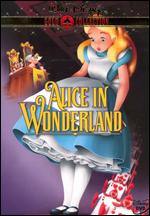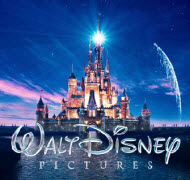Alice in Wonderland
Reviewed by: Brett Willis
STAFF WRITER
| Moral Rating: | Better than Average |
| Moviemaking Quality: |
|
| Primary Audience: | 8 to Adult |
| Genre: | Animation |
| Length: | 1 hr. 15 min. |
| Year of Release: | 1951 |
| USA Release: |
July 28, 1951 |

Review of “Alice in Wonderland” (2010)
| Featuring |
|---|
| voices of Heather Angel, Don Barclay, Kathryn Beaumont, Jerry Colonna, Verna Felton, Larry Grey, Richard Haydn, Sterling Holloway, Wilfred Jackson, Joseph Kearns, Queenie Leonard, Doris Lloyd, Hamilton Luske, James Macdonald, Pat O'Malley, Bill Thompson, Dink Trout, Ed Wynn |
| Director |
|
Clyde Geronimi, Wilfred Jackson, Hamilton Luske |
| Producer |
| Walt Disney |
| Distributor |
Of more than a dozen film renditions of Lewis Carroll’s “Alice’s Adventures in Wonderland” and/or “Through the Looking-Glass,” this Disney version is probably the best known.
Alice is dissatisfied with boring, everyday life. She wishes for a fantasy world where nothing would be what it is, and everything would be what it isn’t. And by falling down a hole while chasing the mysterious White Rabbit, she soon gets her wish.
The scene at the Mad Hatter’s (Ed Wynn) tea party has to be one of the greatest examples on film of sheer nonsense comedy. Also worthy of mention are the Cheshire Cat (Sterling Holloway) sequences.
More disturbing are the deaths of humanized characters: the cute baby oysters that are eaten by the walrus (this sequence is sometimes cut from broadcast TV versions), and the domineering Queen of Hearts responding “off with their heads” to every minor annoyance. According to many sources, the original Carroll books were political commentary, written as fantasy to ensure that he didn’t lose HIS head.
There’s no occult/witchcraft content. But the caterpillar with the water pipe, the mushroom and other eats/drinks that make you grow bigger or smaller—some of these elements were later seen as symbolic of hallucinogenic drug use. Witness the Great Society/Jefferson Airplane drug song “White Rabbit,” whose lyrics in turn gave birth to the title of the 1973 drug film “Go Ask Alice”.
In the end, we see that Alice’s adventure was just a bad dream. The minimum appropriate age for children to watch this film would be when they can clearly tell fantasy from reality and won’t suffer from bad dreams themselves.





Interestingly, the poems included in Lewis Carrol’s books are parodies of popular recitations of the time period, and almost all of his characters (and some events) symbolize some idea or event. Look for a site by a student named Lenny on Alice and Wonderland, it goes into great detail about the symbolism, story behind the books, etc.
The movie is great and if it gets people to read the books, even better. (they are the third most-quoted books, after the Bible and Shakespeare) If you have never seen the movie, you should! No, the animation isn’t like it is these days, but it was made in the 50’s, and the cream of the crop, so to speak, of its time.
My Ratings: [Excellent / 4]